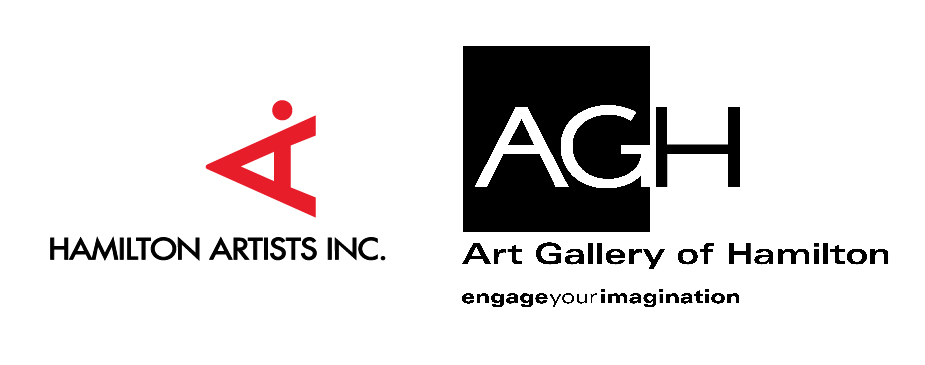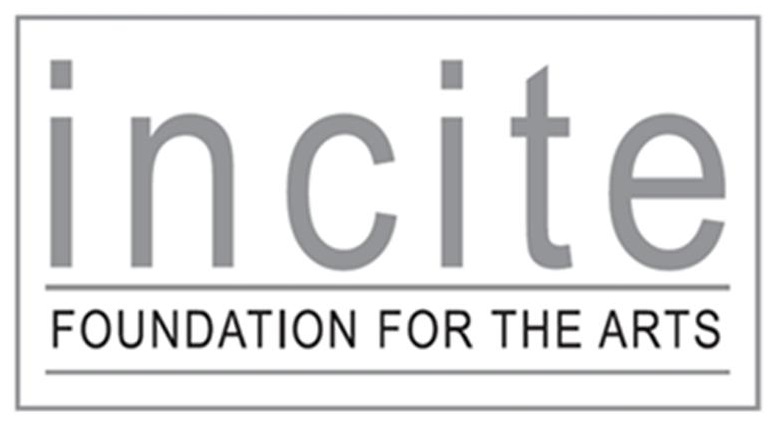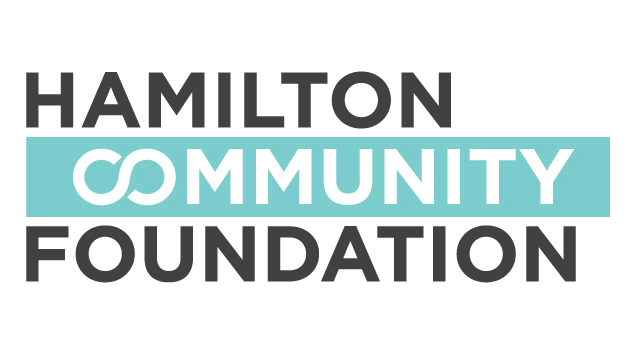Photophobia 2018
- / The Inc.
2018 PROGRAM
Photophobia: Contemporary Moving Image Festival
Program 1: August 9, 8:00 - 11:00 pm at Art Gallery of Hamilton's Irving Zucker Sculpture Garden
Program 2: August 10, 7:00 - 10:00 pm at Factory Media Centre
Program 3: August 11, 8:00 - 11:00 pm at Hamilton Artists Inc.'s ArcelorMittal Dofasco Courtyard
Photophobia is the 12th annual festival of short-format contemporary media, film, video and moving image presented in partnership between the Art Gallery of Hamilton and Hamilton Artists Inc. Established in 1999, Photophobia was Hamilton’s first film and video festival dedicated to the development of experimental time-based media at a time when there were no such platforms in the Hamilton community. Not confined by restrictions or themes, Photophobia showcases contemporary practitioners who test the boundaries of the medium in a free, multi-part festival series presented outdoors under the cover of night. All three screenings are free and accessible.
Program 1:
Thursday, August 9, 8:00 – 11:00 pm
Art Gallery of Hamilton, Irving Zucker Sculpture Garden
123 King Street West, Hamilton, ON
Duration: 92 minutes
Dan Browne (Toronto) - Palmerston Blvd., 2017 (15:00)
An intimate portrait of a bay window recorded over the course of a year. Gradual shifts in the interior and exterior environments mark the passing of the seasons, a slow dance of objects and light juxtaposed by the rapid speeds of bodies and the urban landscape, revealing the processes inherent in all things.
Nicolas Clauss (Marseille, France) – Les Traversants (The Crossing), 2017 (7:41)
"Here, it’s a crossing. But what is crossing: traversing from one point to another, but in what way? Traversing a bridge, a street. Here, it’s water, for a start, whence the striking illusion of lines moving away from and running alongside each other. So that must be it, as if the port of Le Havre was leaving. How does one traverse the ocean? In traversing it, perhaps one loses one’s mind, as one might one’s senses, or at least its rigid dimension, one’s gaze gliding over the things it sees without traversing them. This traversing of an ocean in fact caresses with violence, encompasses all the internal and external narratives of the cargo ship, ports of loading and goods stuffed inside bulky chests, as if some grand sultan was leaving on a very long journey." The film was filmed while crossing the ocean from France to Caribbean.
Maurice Gunning (Limerick, Ireland) – Sekar Arum – Forging the Javanese Gamelan, 2017 (5:00)
A short documentary about the forging of a Javanese Gamelan gong, highlighting the rhythmic nature of the methods employed by traditional gamelan makers, including the firing, moulding and tuning of a new bronze instrument. Filmed on location in Pak Saroyo's forge in the Sukoharjo regency of Surakarta in Central Java, the documentary focuses on the making of one of there instruments, revealing the musical nature of the forging process, from the rhythmic beating of the red-hot metal, to the dance-like quality of the gongsmiths, as they work in concert to bring a single gong to life.
Thea Jones (Hamilton) – Living Room Fall, 2014 (4:30)
This video is a study of the body and an editing technique developed to disrupt formal conventions of linear time. The result from the study is movement from the body that is robotic or insect-like. The camera films the body falling to the ground from above this further disrupts conventions of the horizon and the video frame. I am the body.
Véronique La Perriere M. (Montreal) – Le Soufflé d’Uranie, 2015 (9:00)
Le Souffle d'Uranie (Urania's Breath) puts in motion a procession of cosmic images that appear and disappear through the movement of an evanescent matter. Inspired by the history of astronomy and the influence of celestial bodies on human consciousness, the film is a meditation on the mystery and fragility of existence. The realization of this project was supported by Vidéographe Inc. and the Conseil des arts et des lettres du Québec.
Evgeniya Martirosyan (Cork, Ireland) – Chaos Game, 2017 (11:59)
Chaos Game was created using time lapse recordings of condensation and frost formation on the surface of a custom made refrigeration system. The sequence starts with abstracted matter appearing on a white background and undergoing cycles of transformation from liquid state to solid and back to liquidity. Each subsequent cycle of freezing and melting generates a unique and unpredictable growth pattern. The visual sequence is accompanied by the sounds derived from experimentation with various man made and organic sources: boiler, refrigeration system, sink and rain. Viewed on a large scale, Chaos Game creates an immersive environment and causes multiple associations: from living cells or microorganisms to abstract drawings of an artist. The work aims to convey a process of growth and change and invites the viewer to reflect on the notions of chaos, time, impermanence and transformation.
Josephine Masserella (Hamilton) – 165708, 2017 (6:37)
Shot entirely in 16mm black and white film using single frame photography, 165708 employs in-camera techniques and chemical manipulation of processed film to produce an eidetic study of temporal elasticity. Techniques include stop motion, time-lapse, light painting, flicker, tinting, and toning. Combined with cycles of alternating exposed frames, these methods imbue the work with a rhythmic magnetism, apparent both in the tempo and the aesthetic of the images. Exploring the capacity of the medium to express various notions of time, the film begins with a woman looking out from the shoreline. This acts as a point of departure to disparate yet interconnected sequences which prompt the viewer to engage in a structurally unique mode of inquiry and experience. A dynamic original score by the acclaimed composer Graham Stewart accompanies the film.
Jess Paquette (Troy) – Recondite, 2015 (4:11)
What is time? How is it that you may just be waking up while half of the world is going to bed? Is time the horror you feel as it slips away, and the memories of the past left as hazy or vivid as nightmare and dreams? In the moments of silence does the beat of time become louder? When the tyrant does cease is this when we take note? Time is recondite. Using 16mm film my work is an expression of the movement of time drawing from the contradictions and necessities of country and city. Placing objects and environment of past and present in positions of similarity is a way to question our attitudes, fears, and behaviours to this strange force.
Miles Rufelds (Toronto) – about the equivalent to perpetual motion, 2018 (8:20)
Taking an unaired film from 1959 as its source material and inspiration – a submission, by artist George Weymouth, to an ill-fated film festival organized by experimental filmmaker Stan Brakhage and military-industrial giant DuPont Chemical – this video uses this peculiar historical moment as a jumping-off point to contemplate the conflicted political, industrial, and military histories embedded within the filmic medium itself. The film festival was conceived to popularized a new polyester film stock DuPont had released. This video takes its name from a quote spoken by an ex-DuPont president, congratulating himself for DuPont’s essential role in producing the first nuclear bombs. This ex-president’s speech plays overtop the video, distorted beyond recognition. Archival footage from Weymouth’s original submission is montaged alongside images of the bombs’ construction, taken from DuPont’s archive, and “scanned” in a film-like manner.
Yuka Sato (Toyko, Japan) – In the Room, 2014 (7:00)
A warm and bright place hiding uncleanliness and fear. The slightest disorder of daily life brings the room down into deep darkness. Shot on 8mm film.
Lisa Smolkin (Toronto) – Beyond Reproach, 2017 (11:58)
How does one cope with relational issues and injuries of self-esteem? They search the net, watch TV, buy things, enter VR worlds, identify with cute objects and place themselves in the center when they are feeling invisible. Beyond Reproach opens with an animated screensaver of Sanrio’s, Japanese mega toy brand’s Little Twin Stars bouncing around the screen. It moves to the protagonist talking about her relational issues. So begins this short - as a dance through performance artist, Lisa Smolkin's deepest and most recently trending thoughts. This experimental video is strung together in a nonlinear way much like searching the internet, from one brand association to the next, from one banal thought, to a meme, to a deep developmental deficiency or injury. Lisa buffoons as a new-age clown using themes of narcissism and consumerism as tropes to explore vulnerability, emotions, and self-worth. As a spiritually omnipresent underdog inserting herself into the popular television show The OA as an angel or as the host to a pre-movie tech segment she attempts to remedy her feelings of marginality. Porously sensitive from childhood, she escapes into VR (virtual reality) world and stands witness to a special effects game of beanbag toss with a therapeutic theme. Lisa talks to a real life fashion model and asks a young man about his dreams.
Izzy Treyvaud (Toronto) – Distortion, 2018 (1:02)
Distortion is a process-based material exploration using a photograph photocopied 160 times. One by one, the photocopies are scanned back into a computer and strung together to create a time-based stop motion piece. Each photocopy is a photocopy of the last photocopy, showing a slow degradation of an image. This is a personal piece exploring issues of fragmented identity and the constant tearing apart and re-forming one may go through when facing an internal shift. This piece was inspired by laborious and continuous external process that mirrors the internal one. A photocopy machine seems to produce an exact replica of an image, the next image being the same as the first. For me, this medium spoke to a deeper and more subtle component of the self where, as with photocopies, we shift, change, break down, and rebuild continuously in a significant way, one that can escape surface perception.
The AGH is a fully accessible venue. Please note that AGH exhibitions will be closed. The screening will begin at dusk.
Program 2:
Josephine Massarella: Retrospective
Friday, August 10, 7:00 – 10:00 pm
Factory Media Centre
228 James Street North, Hamilton, ON
Duration: The program will play twice during the course of the evening.
Photophobia: Contemporary Moving Image Festival is honoured to present a retrospective of works by Hamilton filmmaker Josephine Massarella, in partnership with Factory Media Centre. Josephine worked primarily in 16mm film and her works have screened at countless festivals worldwide, winning numerous awards. Notably, her most recent work titled 165708 was awarded ‘Best Experimental’ at the Ann Arbor Film Festival in 2018. Josephine earned a Master of Arts in Cultural Studies from Athabasca University, a graduate certificate in Advanced Film and Television from Sheridan College, and a Bachelor of Arts degree in Film at the University of British Columbia. She also taught introductory filmmaking and cinema studies. Josephine passed away on June 22, 2018. Join us in celebrating the life and works of Josephine Massarella at this special screening during the Hamilton art crawl.
165708, 16 mm, experimental film, 2017
No End, 16 mm, experimental film, 2015
Light Study, 16 mm, experimental film, 2013
Night Stream, 16 mm, experimental, 1996
Green Dream, 16 mm, experimental film, 1994
Interference, 16 mm, experimental film, 1990
No5 Reversal, 16 mm, experimental film, 1989
One Woman Waiting, 16 mm experimental film, 1984
Descriptions of her films are available here: http://www.cfmdc.org/filmmaker/1218
The Factory is a partially accessible venue (inaccessible washrooms).
Program 3:
Saturday, August 11, 8:00 – 11:00 pm
Hamilton Artists Inc., ArcelorMittal Dofasco Courtyard
155 James Street North, Hamilton, ON
Duration: 91 minutes
Alexis Bulman (Montreal) – Up-Stack, Down-Stack, 2018 (6:00)
After undergoing major spinal surgery a student is no longer able to participate in gym class. The PhysEd teacher sits the student at a desk, places 12 red cups in front of her and presses play to a VHS tape of competitive cup stacking. For three semesters the student sits alone and stacks 12 red cups in different sequences in varied levels of complexity and clumsiness. No one ever competes against her, or checks her technique.
Madeleine Co. in collaboration with Nasim Asgari and Cecilia Livingston (Toronto) – Listen to the Chorus, 2017 (7:16)
The public sphere is saturated and constantly abuzz with opinions on the state of women’s rights and their possible futures. Listen to the Chorus is an immersive four-channel video installation which explores the state of women's rights and a collective desire for change. An experimental composition combining poetry and music, Listen to the Chorus was developed from a series of conversations about women's experiences and hopes for the future. The piece seeks to amplify voices of those who identify as women and to present a chorus of resistance that implores the audience to listen.
Pixie Cram (Ottawa) – Joan, 2014 (6:30)
A surreal and materialist version of the story of Joan of Arc. The film was created during a residency at DAÏMÔN in Gatineau, Québec.
Sarah Edmondson (Dublin, Ireland) – The Making of XXXII, After Caravaggio’s ‘Supper at Emmaus’, 2018 (11:30)
The Making of XXXII, after Caravaggio’s 'Supper at Emmaus', 2018 is a video piece in which the artist, dressed in the likeness of Jesus from Caravaggio’s Supper at Emmaus, continuously blows out candles on her 32nd birthday cake, her last birthday still "younger than Jesus." Her frustration visibly increasing as the candles continue to relight is a metaphor for the pressure she feels due to the age expectations placed on her by society. An experience termed the 'social clock' by Bernice Neugarten who debunked the idea of a biological clock determining age. Instead, theorising there is a social clock determining the “correct” time for marriage, childbearing, financial and academic success. The artist shows the unsuccessful filming of XXXII, including the accidental interruption of the performance by her boyfriend. The inclusion of their conversation gives an insight into the artist’s domestic life and the complexity of her identity. A raw account of the reality of life as an artist, the vulnerability and frustration often experienced.
Francesca Fini (Rome, Italy) – DADALOOP, 2015 (9:59)
DADALOOP is a dadaist ratatouille of images in which food becomes a dream - or nightmare - and the reflection of schizophrenic diets in the claustrophobic frame of a self-portrait. The film stages a series of surreal trompe l'oeil inside an artificial 3D landscape in which an hybridized language brings together original video clips - starring the artist herself - and animations made with a collage of cut-out images from famous works of art related to the theme of food.
Sarah Fuller (Winnipeg) – Camouflage (Boulder/Iceland), 2016 (3:58)
In Camouflage (Boulder/Iceland) I utilize the photograph object to investigate the difference between a lithic and a human sense of time. My embodiment as a boulder within the Icelandic landscape is intended to reference a glacial erratic – a tangible remnant of geologic memory and time within the landscape.
Different degrees of concealment and disguise are explored within the work, both in the actual shooting of the video in situ, as well as the blending and blurring of footage within the post-production process. Within my practice I experiment with the inherent materiality of the photographic and video mediums.
Olivia Kerr (Toronto) – Pool. I, 2017 (0:50)
In this piece, I take clips of myself underwater and layer them. My work contains interaction between instinct and environment. A cycle is created as I am physically manipulated by my surroundings which in turn begin to manipulate my thought processes. This response, must also manipulate my surroundings, which push back and begin the cycle again. The physical product that is both consequence and by-product of this process exists in two categories. Firstly, it is the remnant of an act, what has been left and shaped through our mutual processing. Secondly, it exists as the act itself. It is not only a record of movement, but it is the movement itself. All spaces I extended into during the time of interaction are compressed into a repeated moment. I identify the specific intellectual state necessary for this process as the most reduced version of myself.
Henry Heng Lu (Toronto) – Have a Safe Trip, 2017 (2:46)
With the juxtaposition of various video clips taken by the artist from 2011 to 2017 Canada Day holidays with a found ESL textbook audio titled Have A Safe Trip, the homonymous video takes the form of a quick “safety guide” for visitors who travel abroad, from a Canadian perspective. The words enunciated in the audio are paired with footage underlined with bizarre or cliché messages. Rich in visual metaphors, the work is rooted in satires of contemporary Canadian life based on a Chinese immigrant’s experience.
Josephine Massarella (Hamilton) – 165708, 2017 (6:37)
Shot entirely in 16mm black and white film using single frame photography, 165708 employs in-camera techniques and chemical manipulation of processed film to produce an eidetic study of temporal elasticity. Techniques include stop motion, time-lapse, light painting, flicker, tinting, and toning. Combined with cycles of alternating exposed frames, these methods imbue the work with a rhythmic magnetism, apparent both in the tempo and the aesthetic of the images. Exploring the capacity of the medium to express various notions of time, the film begins with a woman looking out from the shoreline. This acts as a point of departure to disparate yet interconnected sequences which prompt the viewer to engage in a structurally unique mode of inquiry and experience. A dynamic original score by the acclaimed composer Graham Stewart accompanies the film.
Fraser McCallum (Toronto) – Fanfare, 2018 (8:45)
Fanfare probes the links between national identity, celebration, and state power by working with images of ceremonies and sites filmed by Jacques Madvo in the 1970s. Madvo's films document a moment when traditional military celebrations began to appear against the backdrop of modernizing Canadian cities. The incongruity between modern cityscapes and military marches reveals the coexistence of two vastly different expressions of statecraft. The residue of this unresolved juxtaposition continues to this day, and is taken up in new footage which builds upon the themes identified in Madvo's images. Commissioned by the Liaison of Independent Filmmakers of Toronto, employing footage from the Jacques Madvo Collection. Supported by the Canada Council for the Arts.
Laura McMorrow (Manorhamilton, Ireland) – The Lost Acre, 2018 (3:44)
In Irish folklore, ‘the lost acre’ refers to an area in the landscape where you can be lead astray. This enchantment can last for several hours during which your time is unaccounted for and familiar places may look different. In the Irish language the phenomenon is known as Fóidin Mearbhaill, or treacherous soil. Often, a person might hear their name called or see someone they thought they knew and follow, only to be found hours or days or even weeks later with no memory of how they came to be miles away from where they should be. This film is a recording of studio experiments. Drawing on the aesthetics of science fiction films and nature documentaries McMorrow uses materials like wax, ice, and jelly to invent a world where the familiar becomes strange. The film seeks to explore the patterns and forces that influence The Lost Acre phenomena.
Sophie Sabet (Toronto) – Though I am Silent, I Shake, 2017 (9:14)
Though I am Silent, I Shake is a single-channel video that explores the complexity of the diasporic queer female body. In the video, I have asked my mother to revisit the story of a controversial painting exhibition she was part of in 1990 in Tehran, Iran, ten years after the Islamic Revolution. The exhibition subtly criticized the government’s authority over female bodies and was almost prohibited by the Ministry of Culture and Islamic Guidance. Hearing about this event as an adult, I was initially compelled to document what appeared to be a subversive act by my mother in a time of struggle for Iranian women. Yet, through conversation, we begin to recognize our diverging ideas regarding womanhood and the female body. The meditative mood of the video is interrupted by our conversation which reveals the frustration my queer body elicits within our relationship.
Derek Jenkins and Ruby Zuroski-Jenkins (Hamilton) – The Shouting Flower, 2018 (12:01)
A work about collaboration and process, "The Shouting Flower" approaches political resistance from multiple subject positions--plant, child, filmmaker--in an attempt to model what Anna Lowenhaupt Tsing calls "work across difference." Using images processed in plant material that was gathered at key locations throughout the city, as well as direct animation and audio recorded on a child's toy, the film documents its own creation within a landscape of hostility and neglect. A collaboration against cooperation, it becomes as it refuses. Refusing, dispersing, it shouts, "No!"
The Inc. is a fully accessible venue. The gallery entrance will be locked after 9:15 pm, please enter through the courtyard on Cannon St. The screening will begin at dusk.

Photophobia is made possible through project support by the Incite Foundation, Mohawk College and the Hamilton Community Foundation



